|
This blog comes out on the last day of the Takis show. It is on at the Tate Modern until 27th October 2019. I had no idea who Takis was but I was at the Tate Modern for another reason today and I thought, why not and so in I popped. Lots of artists are known for just one thing. Takis is the magnet guy. Magnets feature very heavily in his sculptures. They give an extra dimension to his sculptures. If you look at the photo above at first glance it is a just a fairly pleasing assemblage of metal, but look again and you will see elements are suspended at the ends of wire. They are not touching anything. It is strong magnets that keeps them in place. Literal tension. Its a nice idea and i've not seen this done anywhere else. Some of the pieces are kinetic, to varying degrees. When I first arrived the collection of magnets in the top left were just gently oscillating and then a security guard came in and set the large one swinging in a circle. It caused all the smaller ones to follow them round in a pleasing bobbing formation. Some of his work though is not magnets, it is just small electrical component like structures. They are quite interesting to look at but I have to say they don't do much for me.
In a darkened grey coloured gallery are a number of light focused pieces, the darkened room of course emphasising the light as it appears. I like the switched based, almost steam punk feeling mechanism. Timing is often an element. So with the one above left the blue light stays on constantly but the white light flicks on and off at intervals. I particularly like the bulky blue bulbs with the red wires. More robotic and somehow anthropomorphic is the construction above right. It has a nice mechanical menace to it, and again the light illuminates at intervals, and the little balls rotates. The one though that provided me with the most joy was this control panel (above left) . With its switches, flashing lights, and alarmingly swirling dials it reminded me of old sci-fi sets. I was gripped with a strong desire to flip those switches and a regret that I never became a pilot or anything similar. It is a simple concept in a way. Presumably all he has done is jury rig a control panel so it mis-behaves but it was somehow beguiling. At the end room (above right) there was a collection of tall thin sculptures on the end of metal poles. Again they had a strong mechanical or electrical component bent. I could not help comparing them unfavourably to Alexander Calder. I found them a little bit dull. Some of them had a nice scythe like quality that I enjoyed but otherwise I found them difficult to engage with. More intriguing were those three large spheres you can see at the end. The large brown one is in fact more of a shield shape, and has a oversized flatted screw hanging in front of it. The other two are actual spheres and were oscillating gently. Again as I watched a member of museum staff appear. He set the screw swinging so it banged into the shield. He set the metal sphere swinging. This caused it to twang a triplet of wire strings, connected to an amplifier which produces a noise much like when a child gets hold of a bass guitar. That was quite entertaining. This is another theme, the production of discordant chaotic sounds. In an octagonal side room are hung about eight of these rectangular boards (see above left). On them are dangling blunted metal spikes, which intersect differently angled metal wires at different points. Every 5 minutes the magnets are activated which causes the metal spikes to jangle against the strings, producing a pleasing cacophony. After 5 minutes it stops again, at least so the signed informed me. I did not stay for the whole five minutes.
I will leave you with my favourite piece from the show,, three structures held in place by magnets against a white background (Above right). it is the 5 bar stave that particularly appeals to me here. Anyway, hope you found this interesting. Check our my paintings here
0 Comments
Leave a Reply. |
Archives
June 2024
Categories |
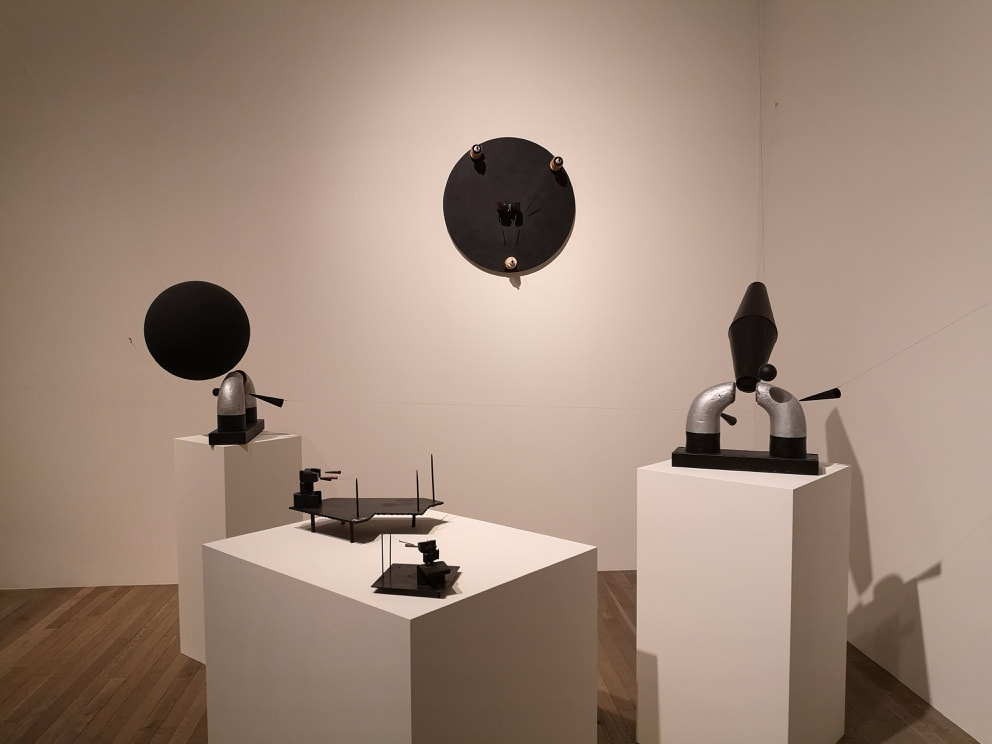
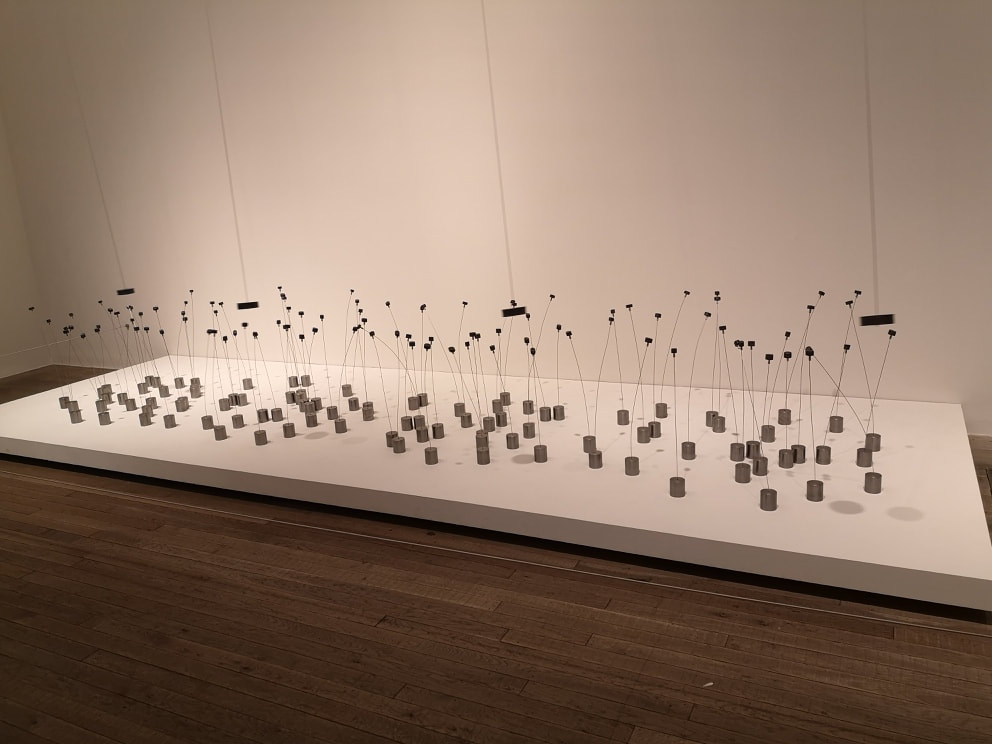
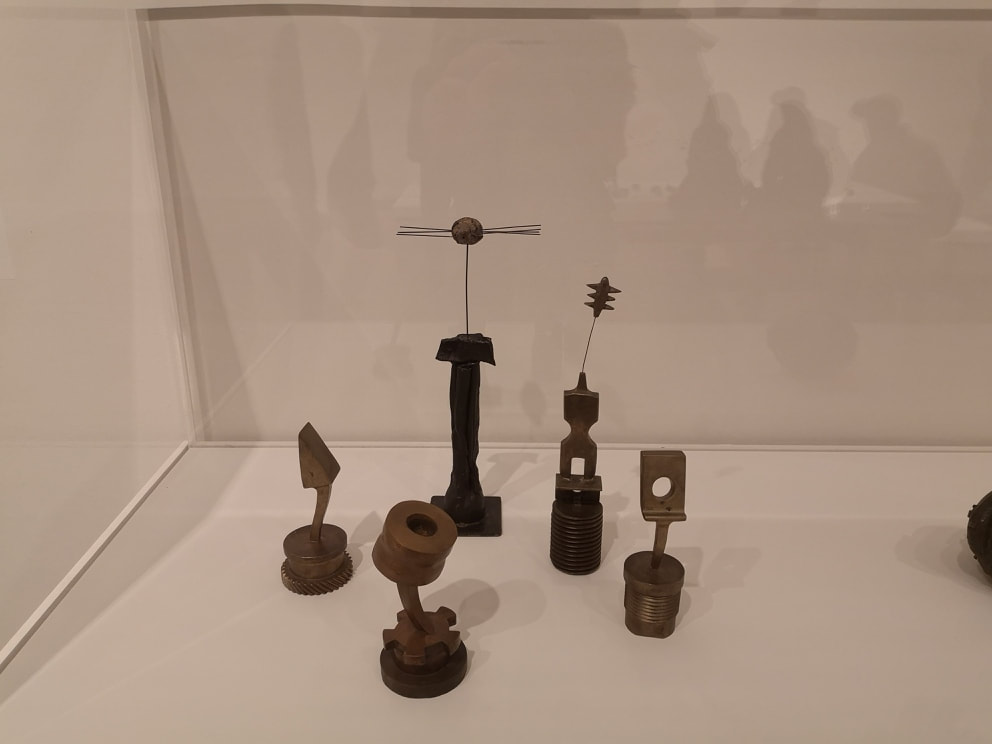
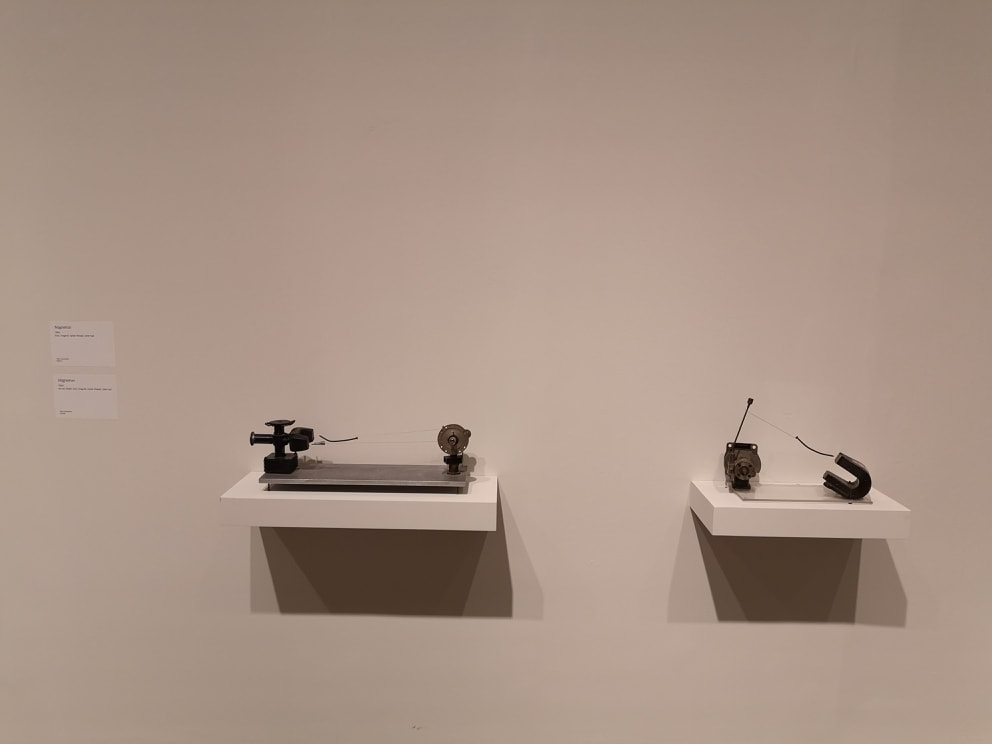
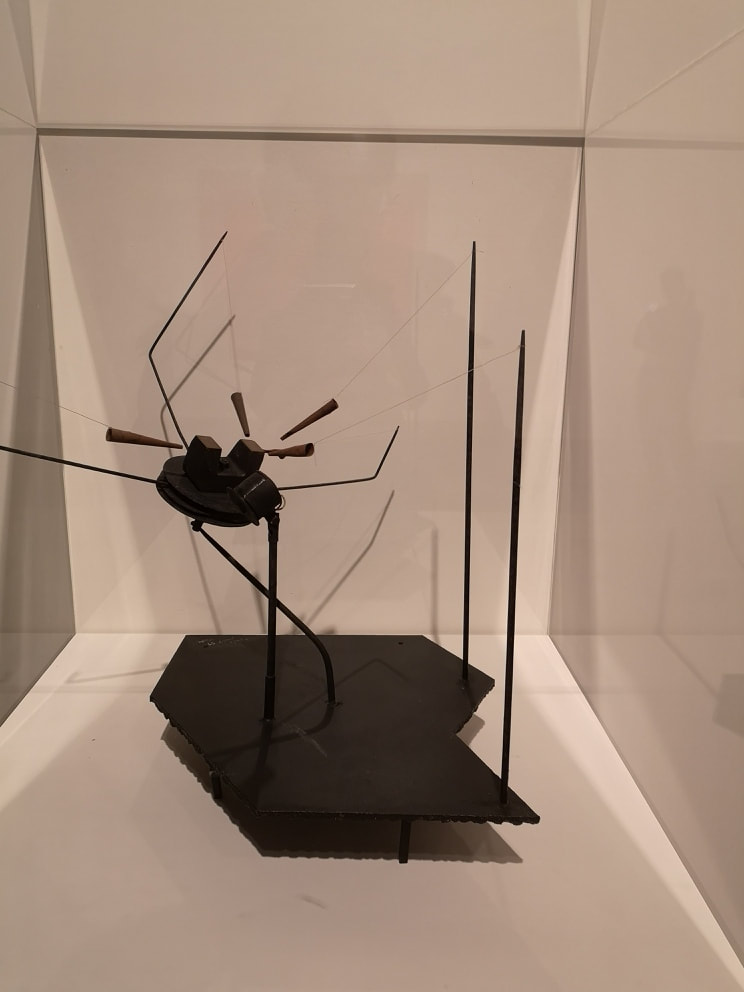
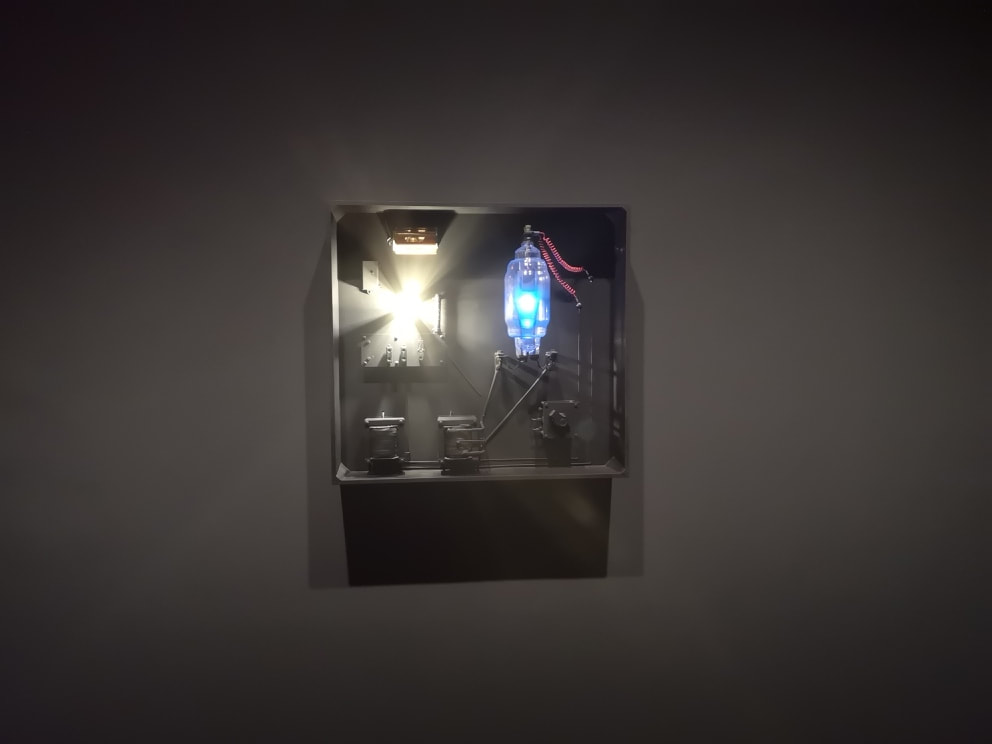
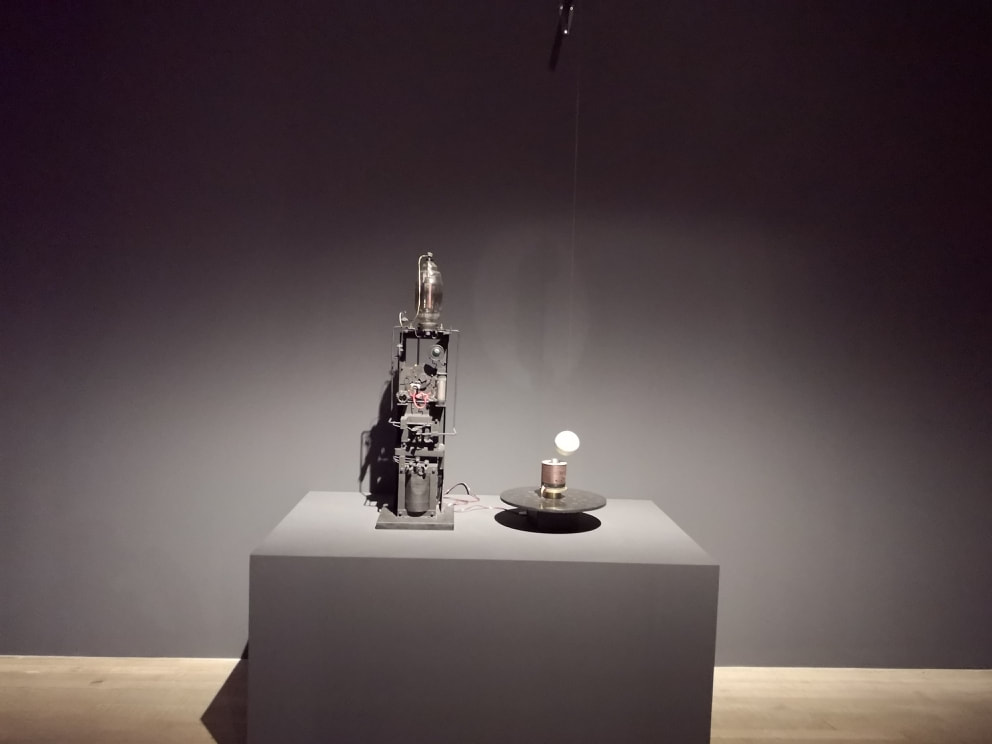
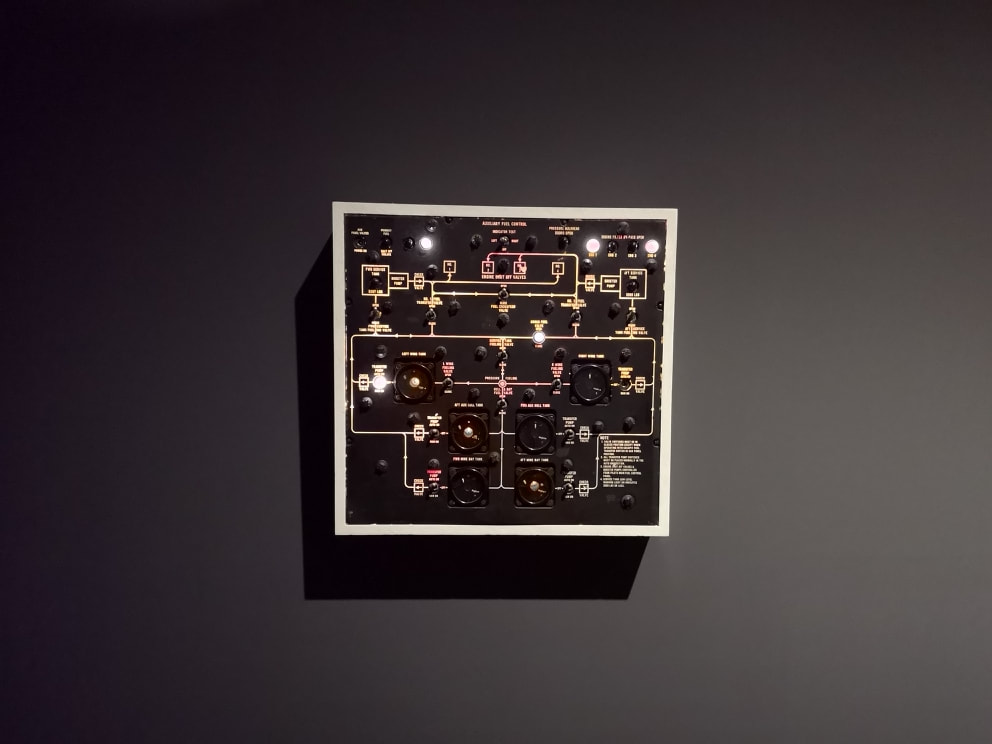
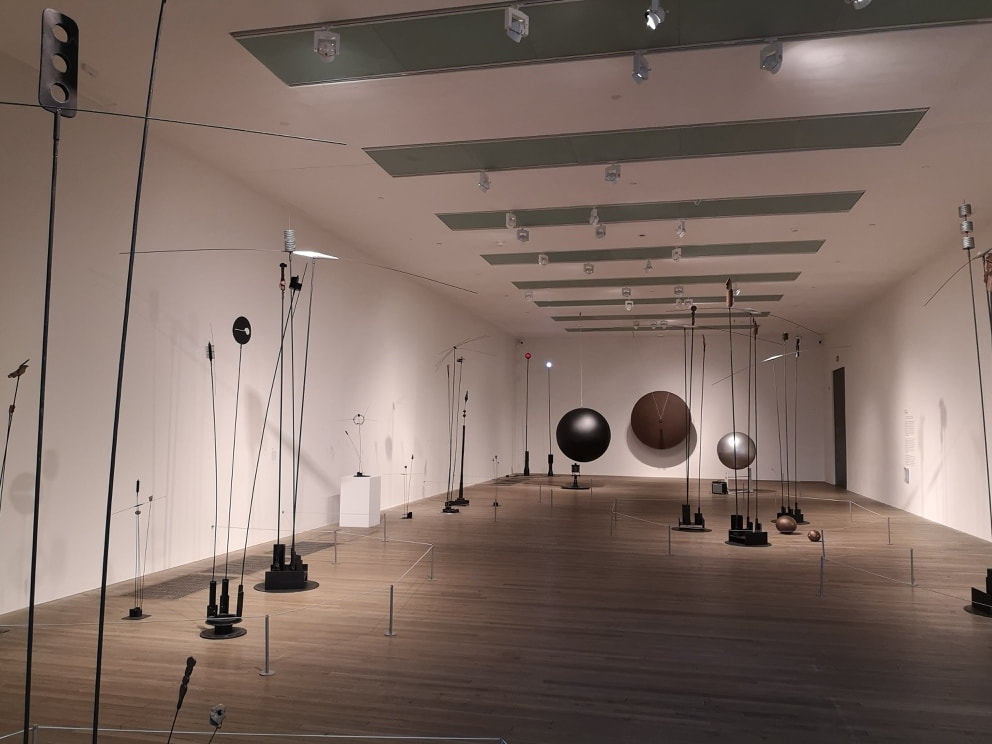
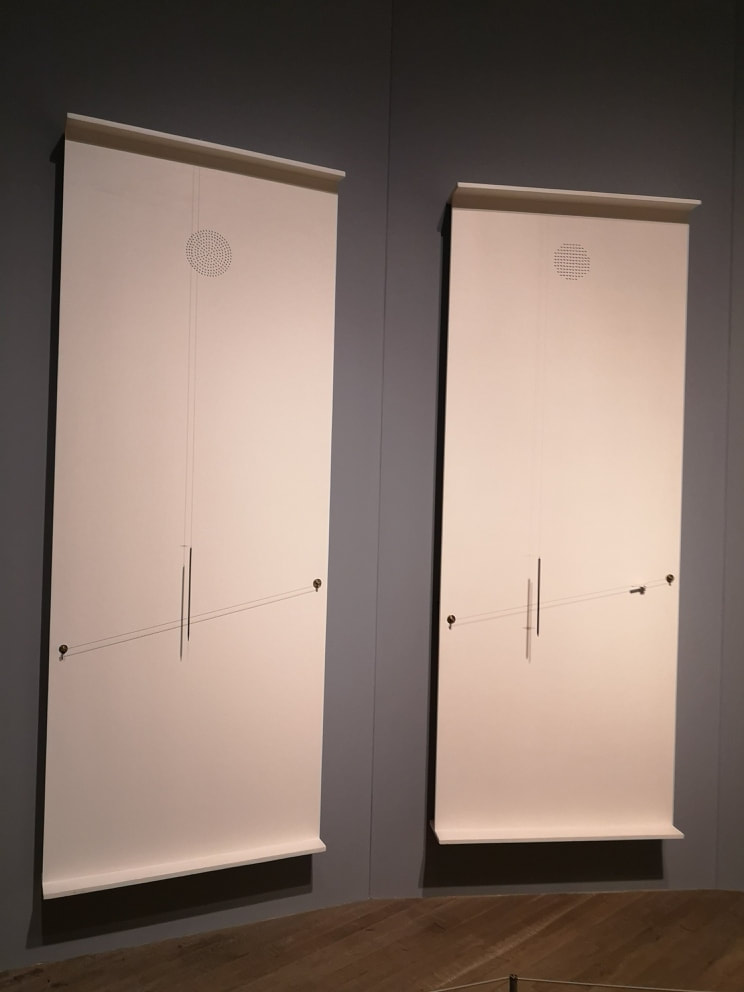
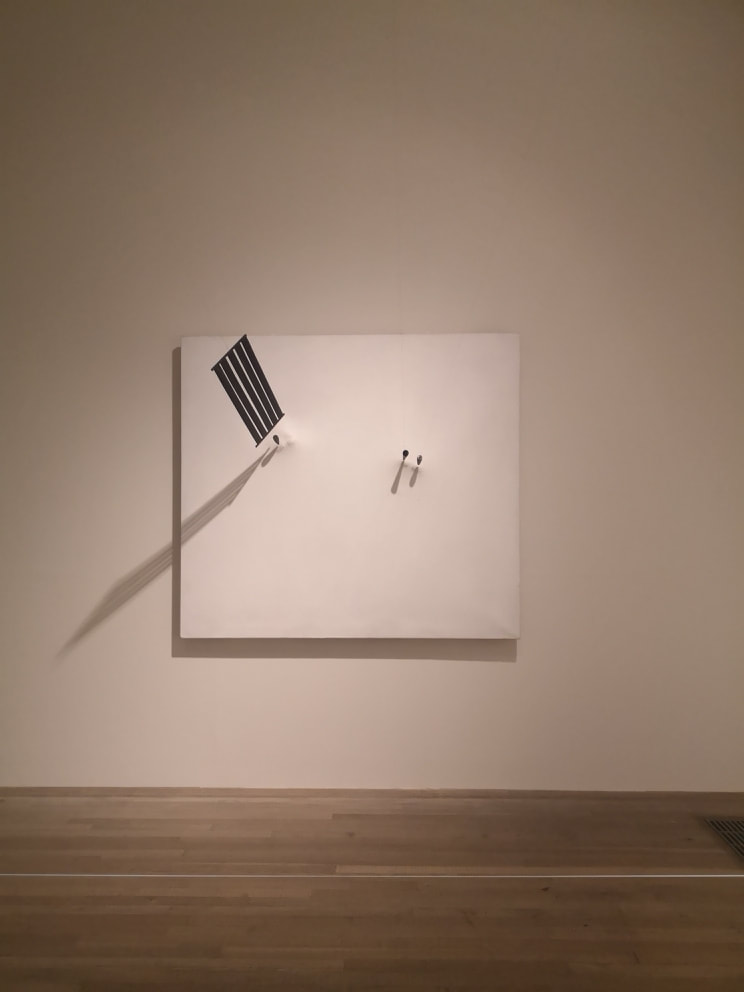
 RSS Feed
RSS Feed